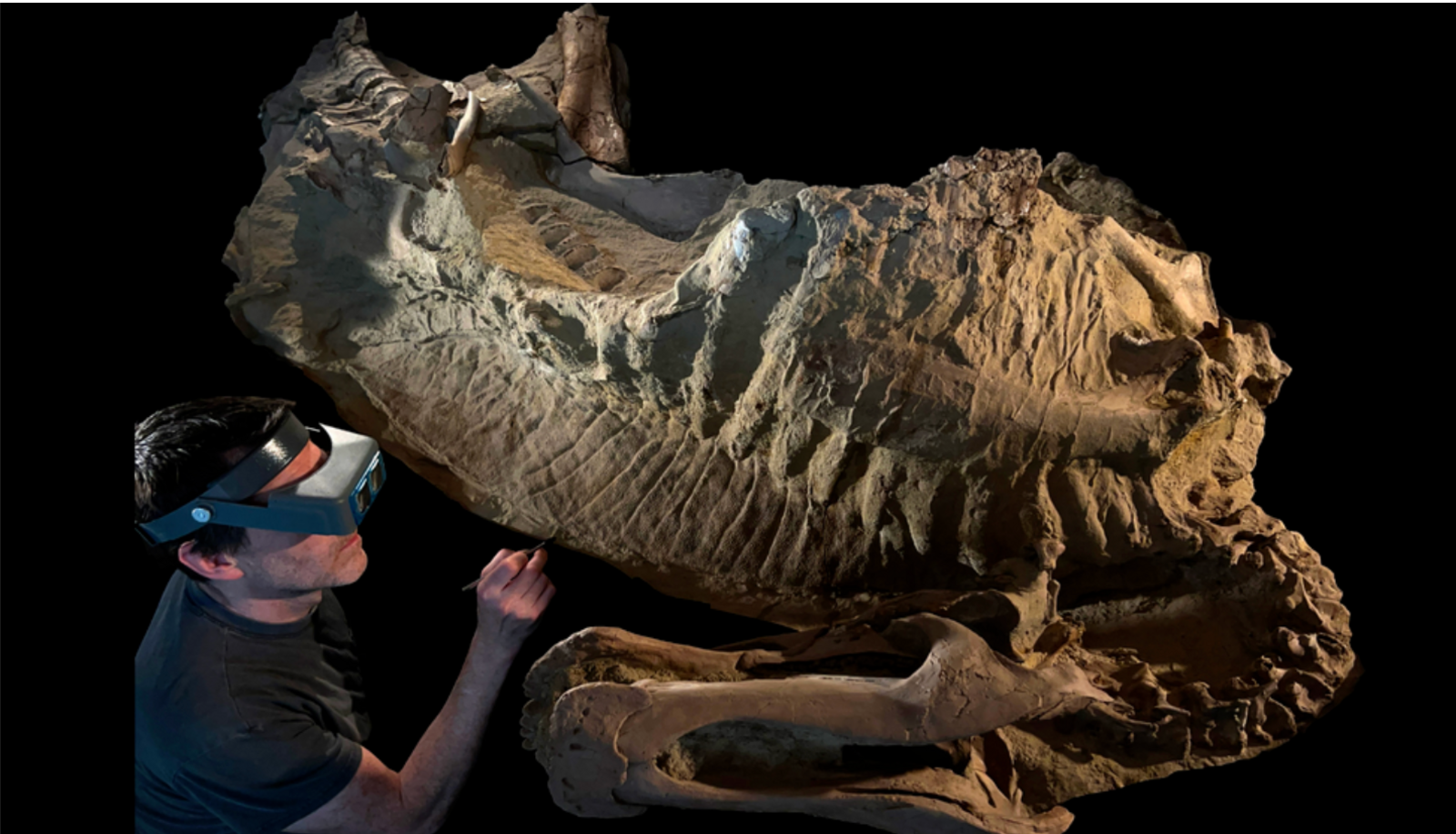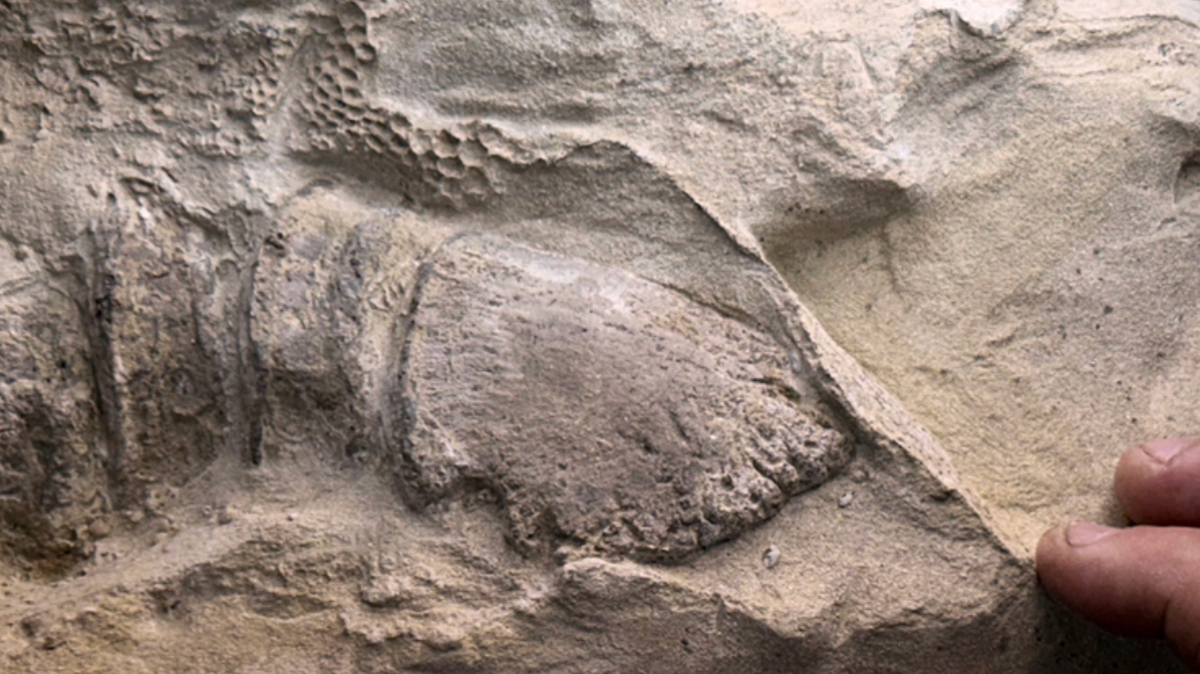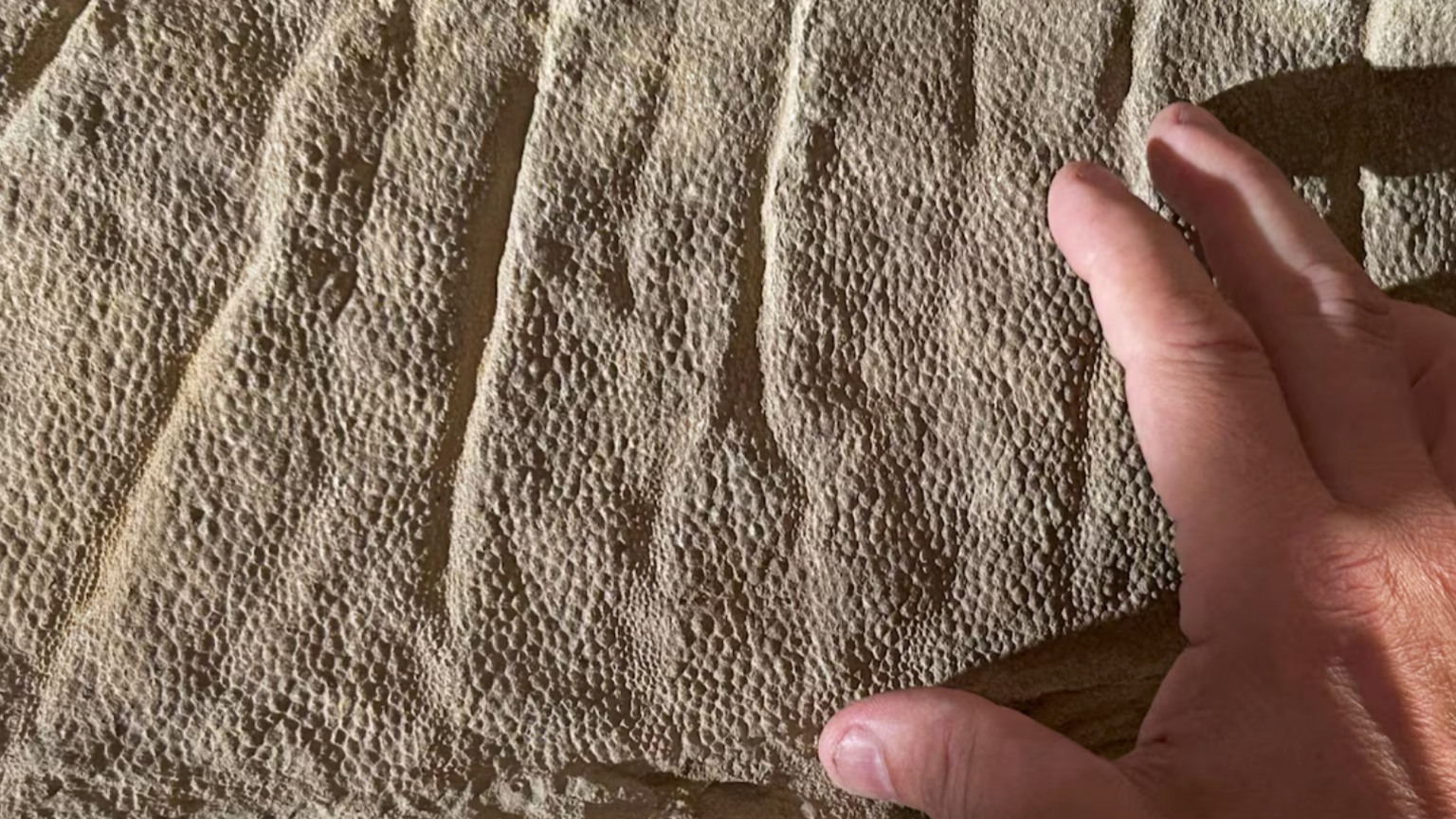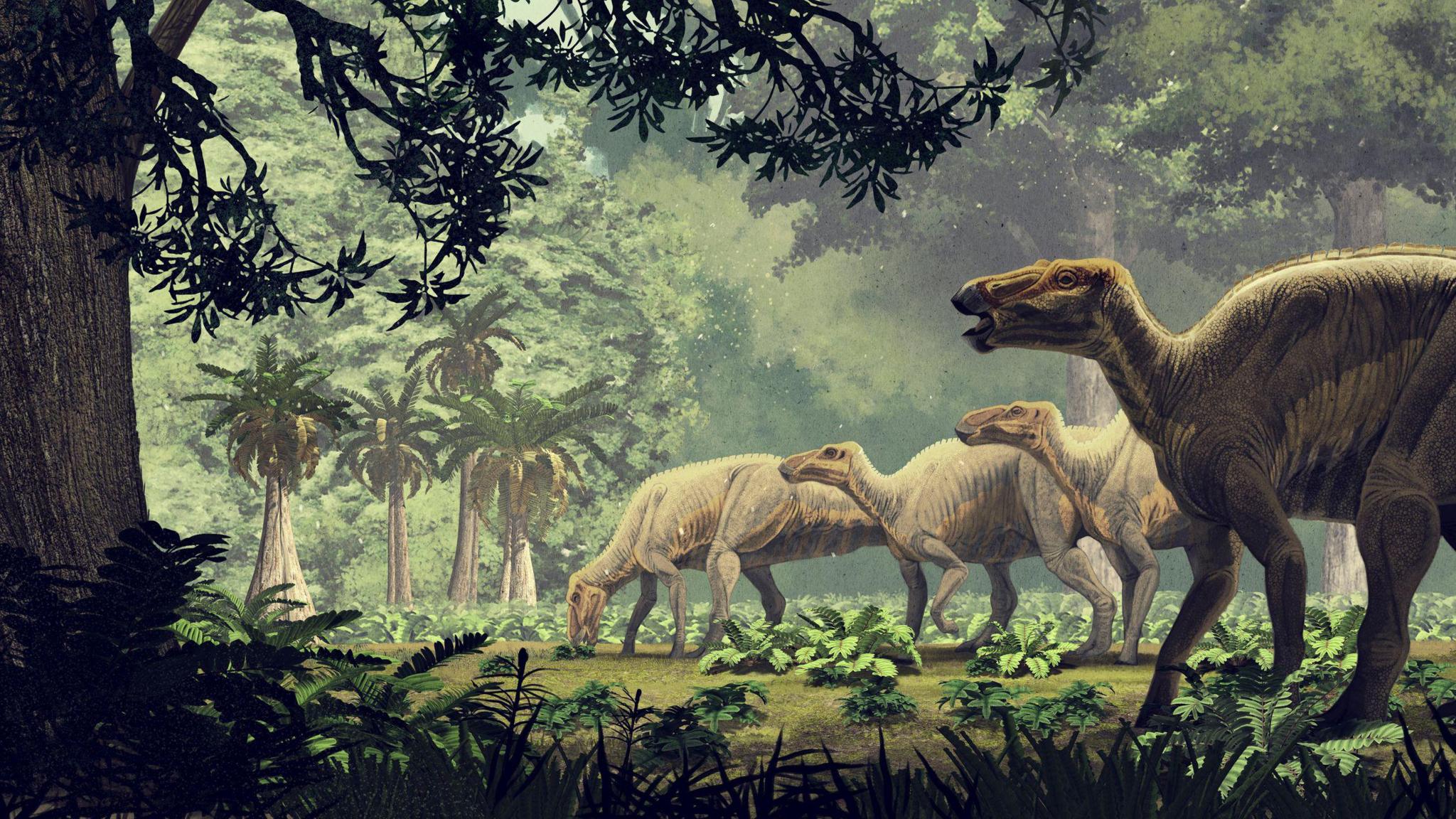Dinosaur 'mummies' found - with scales and hooves!

The dinosaur mummy nicknamed "Ed Jr.," was covered by floodwaters some 66 million years ago
- Published
Have you ever seen a mummy in a museum? What about a dinosaur mummy?
Well, that is what scientists in the USA have uncovered - and in a first for dinosaurs - these ones had hooves.
The discovery of a pair of duck-billed dinosaurs, called Edmontosaurus annectens, is helping scientists learn what dinosaurs really looked like when they were alive.
But the dinos weren't found wrapped in cloth like ancient human mummies, instead the remains were mummified with the help of clay.
- Published17 September 2022
- Published15 October
- Published22 August
Scientists from the University of Chicago found the pair of dinosaurs in an area of eastern Wyoming in the US.
The same area that a duck-billed dinosaur mummy was discovered in 1908.
Most dinosaur fossils only show bones, but these Edmontosaurus are different because they are preserved by the clay around them.
Mummification means parts of its skin and outer body were preserved too.
Scientists found the impressions of skin, the shapes of its feet, and even signs of spikes running down its tail!

The hoof, preserved in section as a very thin clay layer
How did the dinosaurs get mummified?
Scientists think that millions of years ago, the dinosaurs probably died near a clay muddy river.
Then, a sudden flood or a rush of water quickly covered it with a thin layer of clay and mud.
That soft clay acted like a mould, capturing the shape of its skin before it could rot away.
Whilst the body of the dinosaur decayed, the clay kept its form - like a mask, then turning into a fossil that today can show us a lot of detail on the dinosaur's body.

A fossil showing the scaly skin over the back of a juvenile duck-billed dinosaur Edmontosaurus
What is mummification?
Mummification is a special process that happens where bodies are preserved after people or animals have died.

Using the two mummies, researchers were then able to reconstruct a profile of the Edmontosaurus annectens - a peek into the past to see what these creature might have been like.
Scientists said the back feet of the larger mummy was the biggest surprise for them, as they discovered that the Edmontosaurus annectens had hooves.
Speaking about the study, senior author Paul Sereno said: "It's the first time we've had a complete, fleshed-out view of a large dinosaur that we can really feel confident about."
Thanks to discoveries like this, dinosaurs feel a little less like mystery monsters of the past and a little more like real animals that once walked the Earth.
